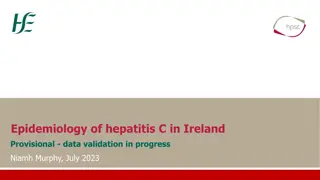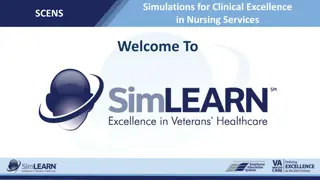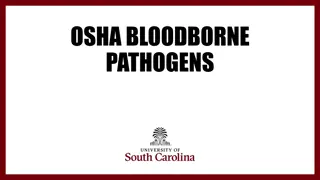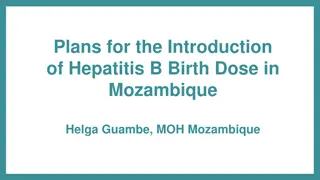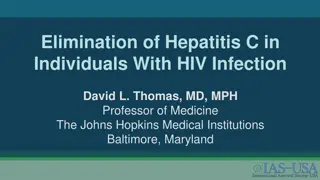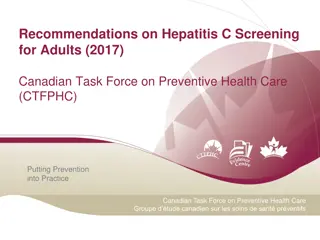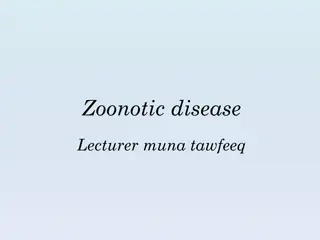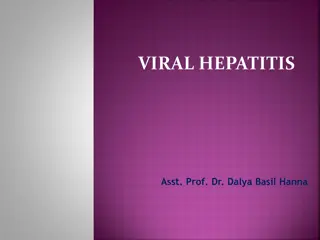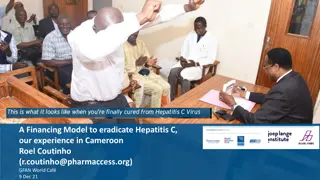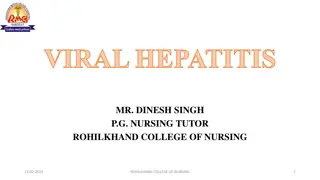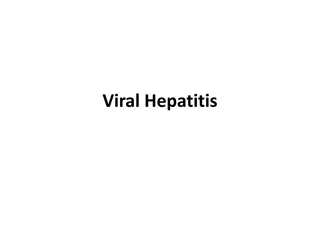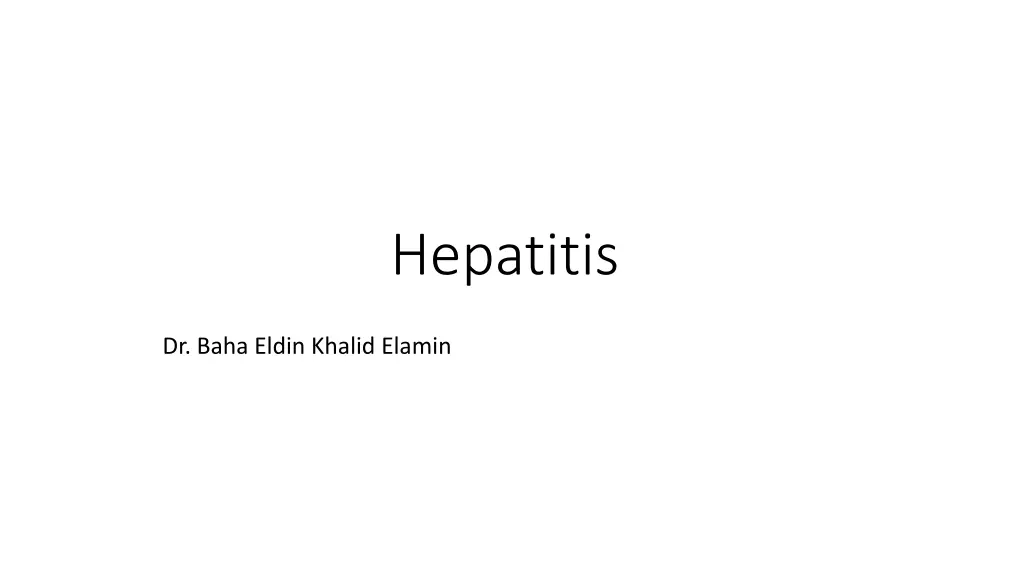
Understanding Hepatitis: Causes, Symptoms, and Prevention
Explore the causative agents, modes of transmission, and differentiation of hepatitis viruses A, B, C, D, and E. Learn about the symptoms, control measures, and clinical manifestations of Hepatitis A. Discover prevention protocols and characteristics of various hepatitis viruses.
Uploaded on | 1 Views
Download Presentation

Please find below an Image/Link to download the presentation.
The content on the website is provided AS IS for your information and personal use only. It may not be sold, licensed, or shared on other websites without obtaining consent from the author. If you encounter any issues during the download, it is possible that the publisher has removed the file from their server.
You are allowed to download the files provided on this website for personal or commercial use, subject to the condition that they are used lawfully. All files are the property of their respective owners.
The content on the website is provided AS IS for your information and personal use only. It may not be sold, licensed, or shared on other websites without obtaining consent from the author.
E N D
Presentation Transcript
Hepatitis Dr. Baha Eldin Khalid Elamin
Specific Learning outcomes Specific Learning outcomes List the causative agents of hepatitis and their mode of transmission Describe the hepatitis viruses with differentiation between them Explain the characteristics of hepatitis viruses and pathogenesis of A.B, C, D, E and prevention protocols
Hepatitis means inflammation of the liver Hepatitis Symptoms Swelling and tenderness of liver Jaundice -yellow tinge in the skin and eyes dark urine transaminase, alkaline phosphatase levels increased
Viral Hepatitis 5 types: A: fecal-oral transmission B: sexual fluids & blood to blood C: blood to blood D: travels with B E: fecal oral transmission
Hepatitis A - HAV "infectious hepatitis" Hepatitis B - HBV "serum hepatitis" Hepatitis C - HCV non A, non B Hepatitis D - HDV Delta virus Hepatitis E - HEV similar to type A
Hepatitis A HAV Hepatitis B HBV Hepatitis C HCV RNA DNA HBV Structure yes no no Cultured in cells endemic Epidemiology endemic endemic & epidemic blood/serum, close contact blood/serum, intimate contact oral/fecal, water & food Transmission Incubation period 2-7 weeks 1-6 months 2-8 weeks Symptoms fever, G-I tract disorder fever, rash, arthritis similar to HBV Jaundice 1 case in 10 common common Onset acute/short gradual/chronic acute/chronic Vaccine not available yes not available Diagnostic tests yes yes yes
Hepatitis A Clinical manifestations asymptotic or anicteric in children 3-5 week incubation period liver inflammation malaise - flu like symptoms self limiting low mortality
Hepatitis A Control No specific control Improve hygiene and sanitation Human immunoglobulin 2 IU anti Hepatitis A /kg body weight HAV vaccines in clinical field trials
Hepatitis B Clinical Manifestations typical viral hepatitis symptoms 4-26 week incubation period more severe than HAV CHRONIC PERSISTENT HEPATITIS CHRONIC ACTIVE HEPATITIS
Hepatitis B Control No specific control Passive Immunization HBV immunoglobulin neonates of infected mothers -immediately after birth Active Immunization HBsAg recombinant DNA in yeast
Hepatitis C Clinical Manifestations resembles HBV persistent carrier state 50% of patients have chronic liver damage associated with hepatocellular carcinoma
Hepatitis D Hepatitis D Dependovirus, it is defective and cannot produce infection unless the cell is also infected with HBV. Viroid - a naked strand of RNA that enters the cell in piggy-back fashion.
Hepatitis E Hepatitis E fecal/oral route predominantly found in developing countries but is world wide. symptoms similar to HAV but mortality 1-2% (ten times that of Hepatitis A). epidemics - India, Pakistan, Nepal, Burma, North Africa and Mexico.
General prevention of Viral Hepatitis General prevention of Viral Hepatitis Control of source of infection Cut off the route of transmission Protection of susceptible population Active immunity Passive immunity
Reference Reference Please there is modification in Reference in Study Guide Microbiology : A system Approach by Marjoriek Lowan , 4thedition Chapter 22 The page from 699 to 702

